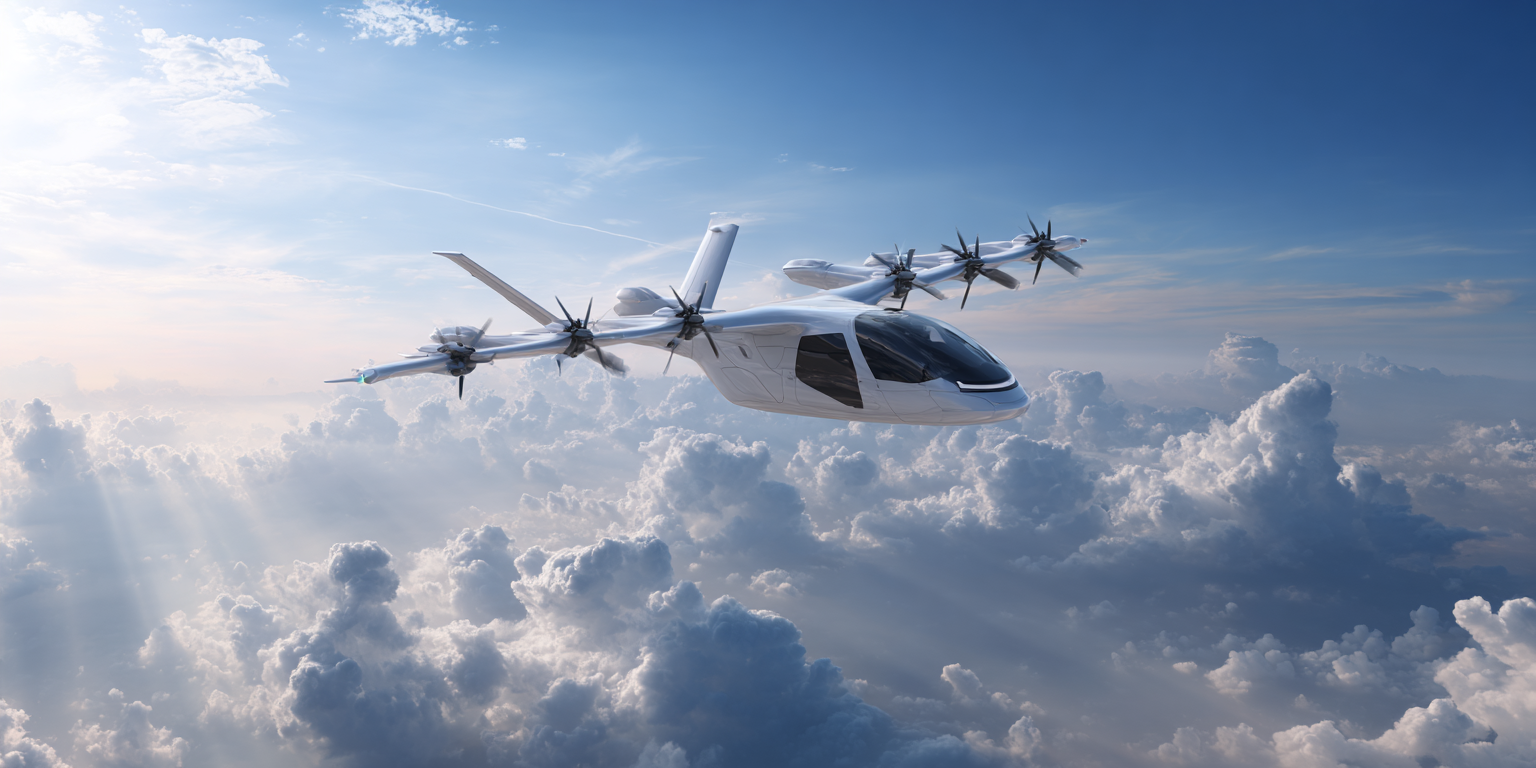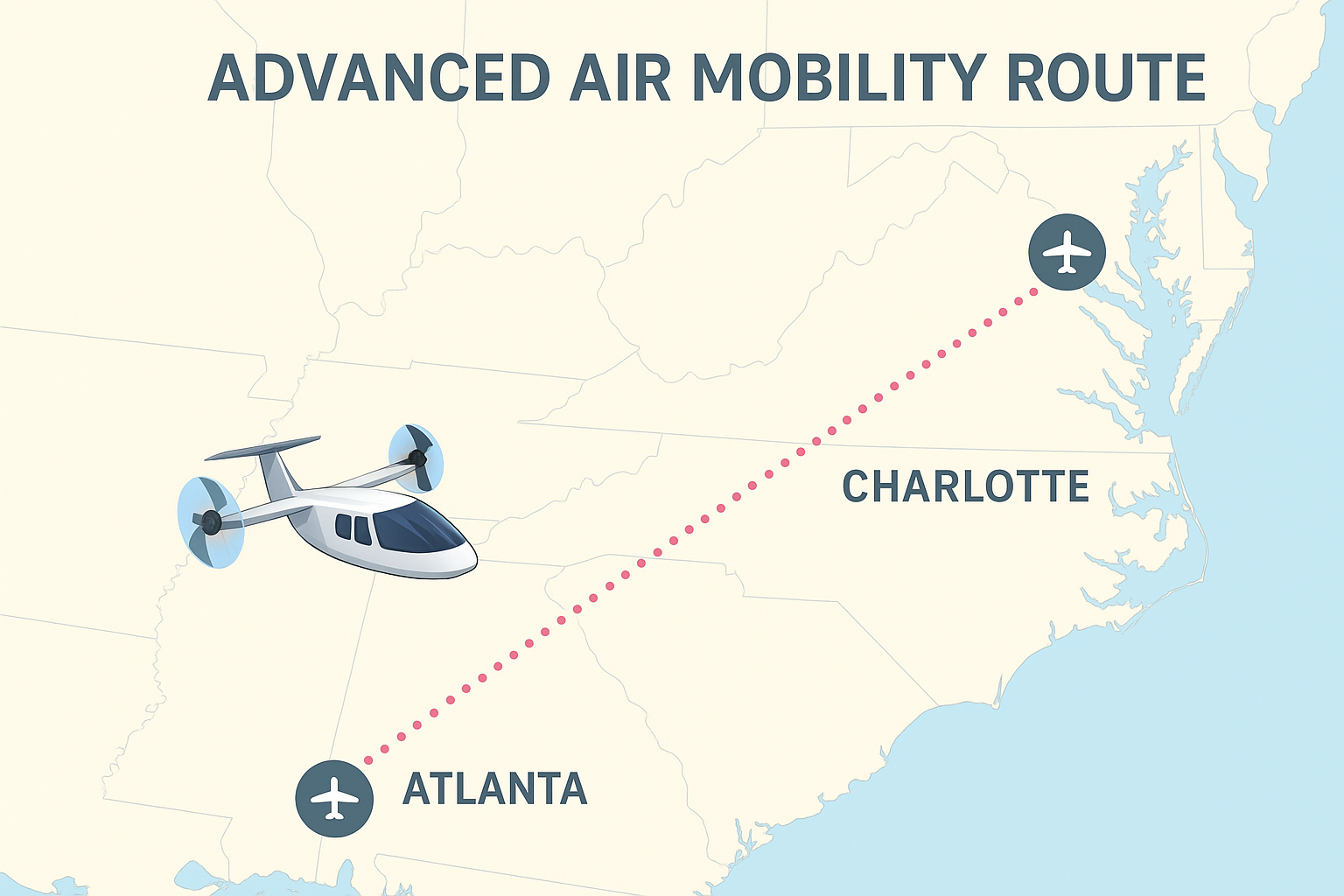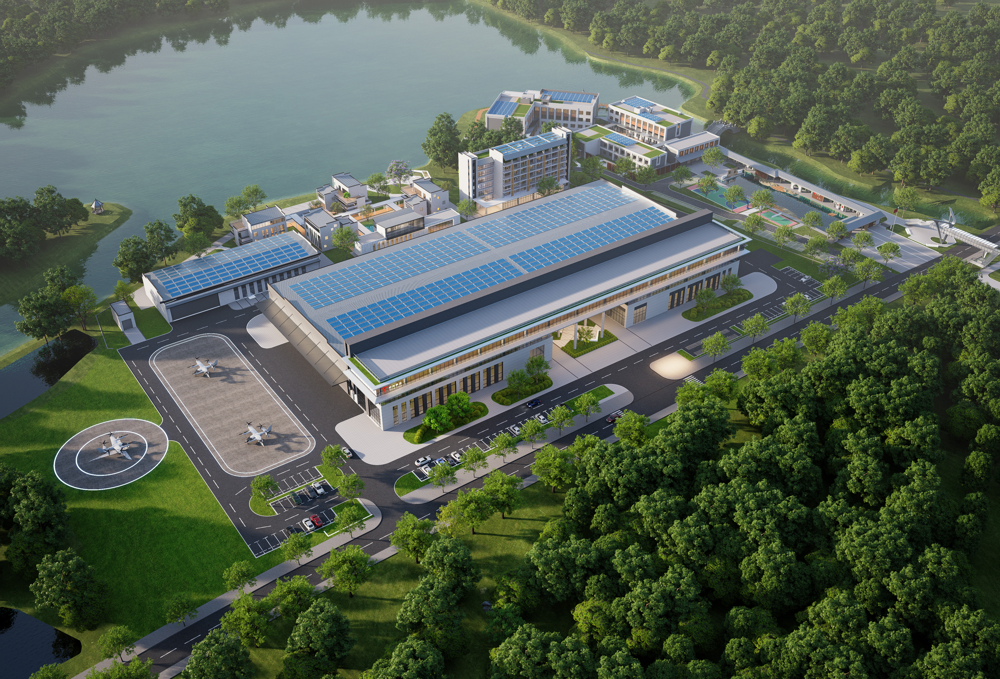Universities and research institutions across North America, Europe, and Asia have moved rapidly to address the Low-Altitude Economy’s growth by developing specialized programs for professionals working below 1,000 meters.
eVTOL News | Electric Aircraft News | Advanced Air Mobility News
News
The North Carolina-Georgia advanced air mobility corridor represents far more than a regional transportation project; it’s likely to become the model for how the United States approaches the low-altitude economy at scale. This first interstate “sky highway” will influence national strategies in ways that reach deep into federal policy, regulatory frameworks, and economic planning for years to come.
The electric vertical takeoff and landing (eVTOL) aircraft industry is one of the most exciting growth opportunities in aviation, with the market expected to expand significantly. The Low Altitude Economist predicts substantial growth from around $0.76-3.5 billion in 2024 to $17.3-77 billion by 2035. The Low Altitude Economist’s comprehensive analysis explores the top pure-play eVTOL investment opportunities and their prospects for 2025.
You're stuck in Houston traffic at 5:30 PM, watching brake lights stretch endlessly ahead. Your important meeting downtown begins in an hour, and you’re barely moving. But what if you could walk to a nearby terminal, board a vertical takeoff aircraft, and reach your destination in 15 minutes? That future is happening right now, and it’s closer than you think.
Hefei, the capital of Anhui Province in eastern China, has developed a broad low-altitude economy (LAE) industry base alongside other major Chinese cities, including Shenzhen. While Shenzhen usually gets the spotlight as China’s drone capital and low-altitude economy leader, Hefei has quietly built an extensive LAE ecosystem that rivals and, in some areas, surpasses the achievements of its more well-known counterpart.
TCab Tech’s new, large manufacturing facility in Wuhu City represents a significant milestone for China’s low-altitude economy and demonstrates how strategic industrial planning can help regional markets lead in emerging technologies. The facility, which broke ground on August 8, 2025, shows that China’s electric vertical takeoff and landing industry has advanced from experimental flights to full-scale production.
The Federal Aviation Administration has unveiled sweeping changes to commercial drone operations that could reshape how businesses deliver packages, inspect infrastructure, and conduct aerial operations across the United States.
- Joby Aviation Acquires Blade: A Strategic Move Reshaping the US, EU Low-Altitude Economy
- AutoFlight Makes Aviation History with World's First 2-Ton eVTOL Offshore Oil Platform Operation
- One startup, three aircraft: ZeroG's plan to fill the skies
- Hong Kong Opens Skies to Higher-Payload Drones: Drives Low Altitude Economy Growth
- Who’s Who in China’s Low-Altitude Economy: The Men and Women Shaping the World’s Largest Low Altitude Economy
- FAA Issues Final Guidance on Powered-Lift Certification: A Crucial Step for the U.S. Low-Altitude Economy
- Shenzhen's Ascendancy: From Fishing Village to the Global Capital of the Low-Altitude Economy
- Power Generation Systems for VTOL Aircraft: Powering the Low Altitude Economy
- Five Nations Unite to Streamline eVTOL Certification
- Essential Reading for Low-Altitude Economy and Advanced Air Mobility Professional






